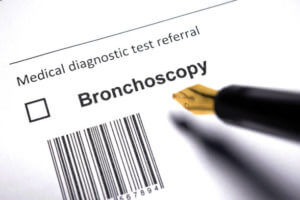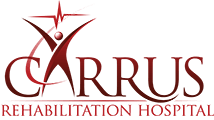
If your primary care physician, lung specialist, or other health care provider has referred you for a bronchoscopy procedure, you will likely have many questions. Let’s learn more about this common outpatient assessment and treatment tool, which examines the airway, lungs, and bronchial tree.
Here’s more on what to expect during a bronchoscopy.
What Is a Bronchoscopy?
A bronchoscopy can be done as an inpatient or, most typically, as an outpatient procedure on both children and adults. During this diagnostic and/or treatment procedure, the physician inserts a rigid or flexible tube down the nose or mouth to gain access to the larynx, trachea, bronchi, and bronchioles in the lungs.
What Can a Doctor Do During a Bronchoscopy?
Both kinds of bronchoscopy tubes come equipped with a miniaturized camera and surgical instruments so the doctor can take real-time video and still images of the interior of the lungs. The surgeon also can:
- Instill medications
- Deliver oxygen therapy
- Suction secretions
- Remove foreign objects (particularly in children)
- Collect sputum and blood for analysis
- Take tissue samples for biopsy and remove polyps
- Visualize tumors and areas of disease and blockage
- Remove blood, mucous, and other secretions, such as pus
- Perform laser or radiation therapies for tumors
- Cauterize bleeding
- Install stents
- Assess the structure and health of the vocal cords and other airway and lung structures
Preparation and Procedural Details
There is little preparation for a bronchoscopy. However, your physician may tell you to stop taking certain medications and supplements for a while before your procedure. You must bring a responsible adult to stay during the test and drive you home afterward.
Before your test, you will be given a sedative if you have a flexible bronchoscopy and general anesthesia if you have a rigid bronchoscopy. Also, your doctor will anesthetize the back of your throat with a medicated spray. As such, you will be comfortable during the bronchoscopy and not gag as the scope is passed down your throat.
Your vital signs will be monitored during your procedure and afterward, as you rest in the recovery area. Once released from the hospital, you will rest at home or in your hospital room after the bronchoscopy.
You can resume normal household tasks or return to work as your physician directs–usually within a day or two.
Bronchoscopy in Sherman, TX
At Carrus Health, our teams are dedicated to providing personalized patient care in all medical subjects. Our physicians, nursing staff, therapists, and management teams all come together and strive to deliver healthcare excellence through all our services. While you’re with us, you can receive medical services on an outpatient basis at the other hospitals and clinics in our group.
If bronchoscopy is in your future, give us a call at (903) 870-2680 to learn more about the process or request a visit online. We make sure all our patients understand the care they receive in our warm, safe, and supportive rehabilitation environment.

